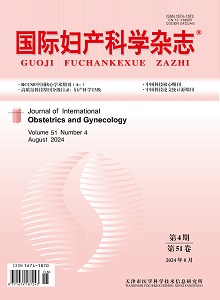Objective: To investigate the occurrence of depressive symptoms and influence factors among perinatal women at different stages in economically underdeveloped areas of Sichuan province, China. Methods: Pregnant women receiving prenatal care or hospitalized for delivery at four medical institutions in Zigong and Nanchong cities from October 2022 to September 2023 were selected. Sociodemographic and clinical data were collected, and the Edinburgh Postnatal Depression Scale (EPDS) was utilized for depression screening. Logistic regression analysis was conducted to identify factors influencing depression symptoms during five perinatal periods [early pregnancy (<14 weeks), mid-pregnancy (14-27+6 weeks), late pregnancy (≥28 weeks), 1 week postpartum, and 6 weeks postpartum]. Results: A total of 3 696 pregnant women were included, with depression symptom detection rates ranging from 26.39% to 35.38% during the five perinatal periods. Logistic regression analysis revealed different risk factors for depressive symptoms among different perinatal periods. Risk factors included unplanned pregnancy, family history of psychiatric illness, experiencing 2 weeks of depressed mood in the year before pregnancy, and experiencing low mood or anxiety during the last menstrual period in early period of pregnancy; family history of psychiatric illness, current rural residence, experiencing 2 weeks of low mood or anxiety in the year before pregnancy, and experiencing low mood or anxiety during the last menstrual period in mid-pregnancy; family history of hypertension, diabetes, or cancer, experiencing 2 weeks of low mood or anxiety in the year before pregnancy, and experiencing anxiety during the last menstrual period in late pregnancy; family history of psychiatric illness, hypertension, diabetes, or cancer, experiencing 2 weeks of low mood in the year before pregnancy, and experiencing anxiety during the last menstrual period in the first week postpartum; being a primipara, current rural residence, family history of psychiatric illness, and experiencing 2 weeks of anxiety in the year before pregnancy in the sixth week postpartum. Conclusions: The detection rate of depressive symptoms among perinatal women in Nanchong and Zigong areas is relatively high level. It is recommended that perinatal health care providers initiate depression screening from early stage of pregnancy, focus on pregnant women with risk factors at different stages, repeat screening when if necessary, provide timely psychological interviews and specialized treatment to individuals at risk of hidden perinatal depression, and reduce the occurrence of adverse maternal and infant events.

